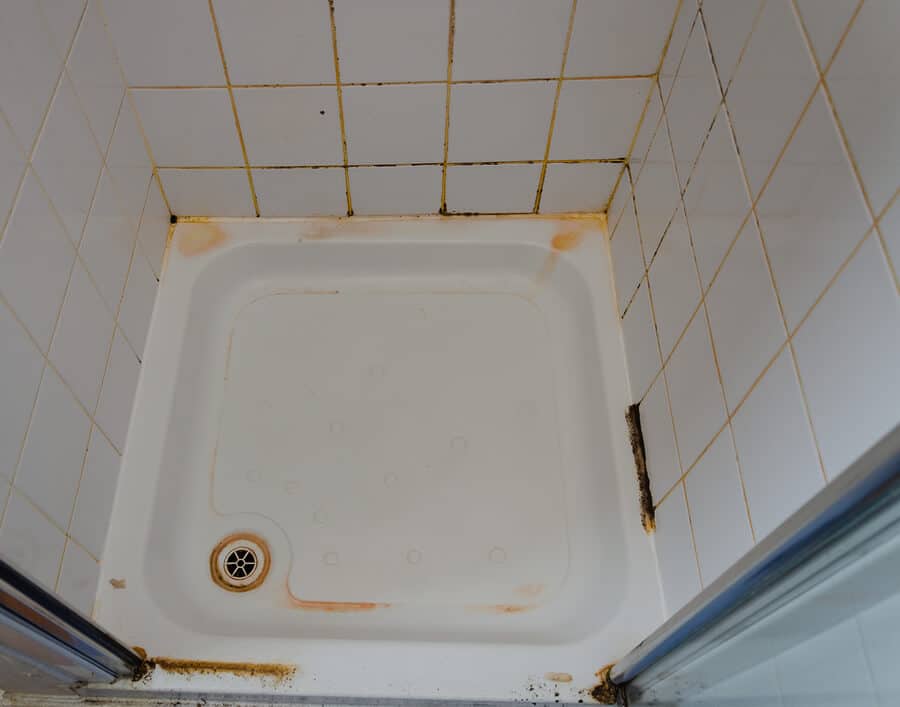How to Get Rid of Pink Mold in Shower
Home » Plumbing Tips » Pink Mold in Your Bathroom: What Is It & How Do You Get Rid of It?
Have you ever seen a pink film in your bathroom and wished you could get rid of this "mold?" It's not actually mold! It's a bacteria known as Serratia marcescens, which is often caused by plumbing leaks. If you suspect a leak has sprung in your home's plumbing system, don't delay in calling a professional. The sooner you catch it, the less damage done to your home. Find out what Serratia marcescens means for your health, bathroom, and cleaning.
What Is Serratia Marcescens?
Although this pink slime can resemble orange or pink mold, it's not the same. Serratia marcescens is a biofilm of bacteria that can be found just about anywhere in the world, including in soil and water.
The bacterial colony chooses your bathroom as its favorite spot because it grows by feeding off mineral deposits in soap scum and fatty deposits from your shampoo and soap residue. You may also discover it in sinks and toilets, especially if chlorine is removed from your water.
But Serratia marcescens can pop up in other areas of your home too because the bacteria is airborne. Opening windows on warm days can cause the bacteria to spread around the house.
Is Serratia Marcescens Dangerous?
Since mold is dangerous to health, many think this pink film is dangerous. In most cases, unless you are in poor health, Serratia marcescens isn't harmful. It has been known to contaminate contact lenses, cause eye infections, and irritation. If you have Serratia marcescens in your home and you're concerned about how it might affect your health, speak to your doctor.

Not to Be Confused with Orange Mold!
Although Serratia marcescens isn't a mold, it can sometimes be confused with other types of fungus, including orange mold. Unlike black or green mold, orange mold isn't a fungus; it's a slime mold, but it can be found with other types of fungus. Although orange is its most prominent color, you may spot some tinges of white, gray, or other colors mixed in. It also has a different texture when compared to other types of mold. While black mold may be fuzzy, the orange types can appear slimy, as well as wet and lumpy. Some kinds may actually resemble a sponge in appearance and texture.
While not usually life-threatening to those in good health, symptoms can be worse in people who already have allergies or breathing problems. Those who have weak immune systems may also be more likely to fall ill because of the growth.
You can keep orange mold at bay by keeping your bathroom as dry as possible, checking regularly for leaks, and cleaning out the fridge regularly.
How Can You Prevent Serratia Marcescens?
Simple steps can help keep Serratia marcescens at bay:
- Keep your bathroom as dry as possible.
- Use a fan or proper ventilation in the bathroom and kitchen.
- Clean your home regularly, especially the kitchen and bathroom, to prevent growth – Cleaning the rest of your home will prevent it from spreading, especially if you enjoy keeping your windows open.
- Clean up soap scum in your bathtub and shower and on the shower curtain or door.
- Flush regularly.
- Schedule regular inspections with a plumber to check for (and fix) any leaks in your plumbing.
- Remove bathroom carpeting – Opt for a mat that can be easily cleaned instead.

Plumbing Inspections
At a Great Price!
How Can Serratia Marcecens Be Removed?
Regularly cleaning your bathroom is one of the best things you can do to keep Serratia marcescens out of your shower, toilet, and sink. When tackling your bathroom, it's always a good idea to clean using gloves and a breathing mask, especially if you are sick.
You can clean by using:
A Homemade Mixture
A very easy homemade mixture that you can use to clean Serratia marcescens is baking soda mixed with dish detergent (a 4:1 ratio works best). After rinsing this mixture off, continue cleaning with vinegar. Let this soak and then clean and rinse.
Bleach
Bleach can be used for mold and Serratia marcescens. If you opt for this course of action, make sure you have good ventilation in the room, and never mix bleach with vinegar or ammonia as it can cause toxic fumes.
Simple steps like leak detection, cleaning your bathroom regularly, and keeping an eye out for Serratia marcescens can help prevent its growth or stop it from getting worse. This pink bacteria isn't usually a threat to a person in good health, but it is unsightly. A bathroom free of Serratia marcescens is just nicer to use!
Although Serratia marcecens is not mold, if the pink bacteria in your home is caused by a leak in your plumbing, we can help. If you suspect fungus is in your bathroom or any part of your home—or you've found a leak—make an appointment with a plumber. You can reach C&W Plumbing at 972-395-2597 anytime!
The following two tabs change content below.
- Bio
- Latest Posts
Chris Edmonds is the owner of C&W Plumbing, located in Lewisville, Texas. Chris has been a master plumber since 1999, and lives in Highland Village with his wife Karen and two daughters.
How to Get Rid of Pink Mold in Shower
Source: https://www.candwplumbing.com/plumbing-tips/pink-mold-in-shower/